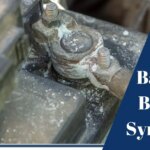RV bumper caps seem like they’re the perfect solution for protecting your RV’s back bumper. They attach firmly and are just the right size to fit over the top without a problem, as long as you adhere them to your bumper properly. If not, though, they’ll slide off or fall off due to their lack of grip on your vehicle. So, how to keep RV bumper caps on? It turns out to be quite easy.
RV bumper caps are essential for protecting the rear bumper of your recreational vehicle (RV) from dirt, debris, and other elements. However, they have a tendency to come loose or fall off during travel, leading to potential damage and loss. In this article, we will discuss effective methods to keep RV bumper caps securely in place.
Whether you’re a seasoned RV enthusiast or a beginner, these tips will help you ensure that your bumper caps stay put and your RV remains protected.
> Get the Mag-cap RV Bumper Cap from Camco here
Table of Contents
How to Keep Rv Bumper Caps on – the simple way
To secure the cap firmly, insert a bolt, long nail, or rod measuring 2 to 3 inches in length into the hole. The extended length will prevent it from dislodging during travel. For added security, you can consider drilling a corresponding hole on the bottom and extending the rod or screw through the bumper.
What is RV Bumper Cap?
RV bumper caps are protective covers designed specifically for the bumpers of recreational vehicles (RVs). The bumper is located at the rear of an RV and serves multiple purposes, such as housing storage compartments, providing stability, and offering protection in case of collisions.
Bumper caps are typically made of durable materials like plastic or rubber. They are designed to fit securely over the RV bumper, acting as a shield against various elements and potential damage.
Benefits of RV bumper caps
- Protection: Bumper caps help protect the RV’s rear bumper from scratches, dents, and other types of damage that can occur during travel or when the vehicle is parked.
- Weather resistance: By covering the bumper, these caps provide a layer of protection against rain, snow, UV rays, and other weather conditions that can cause deterioration over time.
- Safety: Bumper caps can help prevent accidents and injuries by covering any sharp edges or protruding objects on the bumper. They also act as a visual indicator, making the RV more visible to other drivers on the road.
- Aesthetics: Many RV owners use bumper caps to enhance the overall appearance of their vehicle. Caps are available in various colors and designs, allowing owners to personalize their RV’s rear end.
- Storage enhancement: Some bumper caps come with additional features such as storage compartments or accessory mounts. These can be used to store items like sewer hose attachments or bike racks, making the most of the available space.
When selecting an RV bumper cap, it’s important to ensure a proper fit for your specific RV model. It’s also advisable to choose a cap made of high-quality materials to ensure durability and long-lasting protection for your RV’s bumper.
Common Challenges with RV Bumper Caps
- Fit and Compatibility: One challenge is finding a bumper cap that fits properly and is compatible with the specific make and model of the RV. RV bumpers come in various sizes and shapes, so ensuring the cap is the right fit is essential to provide adequate protection and stability.
- Durability: Some bumper caps may lack durability, especially if they are made of low-quality materials. Continuous exposure to harsh weather conditions, UV rays, and road debris can cause premature wear and tear, leading to cracks, fading, or even complete failure of the cap.
- Installation and Security: Installing and securing the bumper cap can be challenging for some RV owners. Depending on the design, the cap may require screws, straps, or other fastening mechanisms, and improper installation can result in the cap becoming loose or falling off during travel.
- Loss or Theft: RV bumper caps can sometimes be lost or stolen due to their detachable nature. If the cap is not securely attached or if it doesn’t fit tightly, it could easily be dislodged or removed without the owner’s knowledge.
- Limited Storage Space: While some bumper caps offer additional storage compartments, others may not have this feature. This limitation can be challenging for RV owners who rely on the bumper area to store essential items such as sewer hoses or leveling blocks.
To address these challenges, it’s important to research and choose a high-quality bumper cap that is specifically designed for your RV model. Proper installation, regular inspections, and maintenance can help ensure the cap remains secure and functional. Additionally, taking precautions to prevent loss or theft, such as locking mechanisms or storing the RV in a secure area, can help safeguard the bumper cap.
Choosing the Right Bumper Cap
- Size and Compatibility: Measure your RV’s bumper dimensions accurately to ensure a proper fit. Check the specifications provided by the bumper cap manufacturer to ensure compatibility with your specific RV make and model.
- Material Quality: Look for bumper caps made of durable materials such as high-quality plastic or rubber. These materials should be able to withstand various weather conditions, UV rays, and road debris without cracking, fading, or deteriorating quickly.
- Secure Attachment: Consider the attachment mechanism of the bumper cap. Look for caps that provide a secure and tight fit, whether through screws, straps, or other fastening methods. A well-secured cap will stay in place during travel and minimize the risk of falling off.
- Weather Resistance: Ensure the bumper cap is designed to withstand the weather conditions you typically encounter. Look for features like UV protection or weather-resistant coatings that can help prevent fading, cracking, or damage caused by exposure to the elements.
- Aesthetics: Consider the visual appeal of the bumper cap. Choose a design and color that complements the overall look of your RV. This allows you to personalize your vehicle while also providing protection.
- Additional Features: Some bumper caps come with extra features like storage compartments, accessory mounts, or integrated lighting. Assess your needs and determine if any of these additional features would be beneficial for your RV.
- Reviews and Recommendations: Read reviews and seek recommendations from other RV owners or online communities. Their experiences and feedback can provide valuable insights into different bumper cap options’ quality, durability, and performance.
- Price and Warranty: Consider your budget and compare the prices of different bumper caps. However, keep in mind that quality and durability are crucial factors, and it may be worth investing in a higher-quality cap that offers better protection and longevity. Additionally, check if the bumper cap comes with a warranty to ensure you’re covered in case of any manufacturing defects.
Considering these factors, you can make an informed decision and choose a bumper cap that fits your RV properly, provides reliable protection, and meets your specific needs and preferences.
Preparing the Bumper Surface
Preparing the bumper surface before installing a bumper cap is essential to ensure proper adhesion and a secure fit.
- Clean the Surface: Begin by thoroughly cleaning the bumper surface using a mild detergent or soap and water. Remove any dirt, debris, grease, or wax buildup. Rinse off the surface and allow it to dry completely before proceeding.
- Remove Rust and Oxidation: If you notice any rust or oxidation on the bumper surface, it’s crucial to remove it. You can use a rust remover or a fine-grit sandpaper to gently sand away the rusted areas until you reach clean, smooth metal. Wipe off any residue after sanding.
- Smooth Out Imperfections: Inspect the bumper surface for any dents, scratches, or other imperfections. Depending on the severity, you may need to use a filler or putty specifically designed for automotive applications to smooth out these areas. Follow the manufacturer’s instructions for application and drying time.
- Sand the Surface: Use a fine-grit sandpaper to lightly sand the entire bumper surface. This step helps create a slightly roughened texture, allowing the bumper cap adhesive to adhere better. Wipe away any sanding dust with a clean cloth.
- Apply Adhesive Primer (If Required): Some bumper caps may require the use of an adhesive primer for better adhesion. If this is the case, follow the manufacturer’s instructions to apply the primer to the bumper surface. Allow sufficient drying time as recommended before proceeding.
- Position the Bumper Cap: Align the bumper cap with the bumper surface and ensure it fits securely and evenly. Double-check any screw holes or fastening points to make sure they align properly.
- Install the Bumper Cap: Follow the manufacturer’s instructions for attaching the bumper cap to the bumper surface. This may involve using screws, straps, or other fastening mechanisms provided with the bumper cap. Ensure that the cap is firmly attached and properly secured.
- Check and Adjust: After installing the bumper cap, visually inspect it to ensure it is aligned correctly and securely attached. Gently tug or press on different areas to check for any looseness or movement. Make any necessary adjustments to ensure a snug fit.
By following these steps and properly preparing the bumper surface, you can ensure that the bumper cap adheres well and remains securely in place, providing the intended protection for your RV’s bumper.
Using Adhesive or Sealant
When installing a bumper cap on your RV, you may need to use adhesive or sealant to ensure a secure and long-lasting attachment.
- Read the Instructions: Carefully read the manufacturer’s instructions provided with the bumper cap and any adhesive or sealant you plan to use. Different products may have specific application guidelines and drying times, so it’s important to follow them for best results.
- Select the Right Adhesive or Sealant: Choose a high-quality adhesive or sealant that is suitable for the materials of both the bumper cap and the RV bumper. Look for products specifically designed for automotive or outdoor applications, as they tend to have better durability and weather resistance.
- Clean and Dry the Surfaces: Ensure that both the bumper cap and the bumper surface are clean, dry, and free of any dirt, grease, or wax. Use a mild detergent or soap and water to clean the surfaces, and allow them to dry completely before applying the adhesive or sealant.
- Apply the Adhesive or Sealant: Follow the manufacturer’s instructions for applying the adhesive or sealant. In most cases, you’ll need to apply a thin, even layer of adhesive or sealant to the contact surface of the bumper cap or the bumper. Use a brush, applicator, or nozzle provided with the product for precise application.
- Securely Attach the Bumper Cap: Press the bumper cap firmly onto the bumper surface, aligning it properly. Follow any specific instructions provided by the manufacturer regarding the attachment method, such as tightening screws or securing straps. Ensure that the bumper cap is securely and evenly attached.
- Wipe off Excess Adhesive or Sealant: After attaching the bumper cap, carefully wipe off any excess adhesive or sealant that may have squeezed out from the edges. Use a clean cloth or a tool recommended by the adhesive or sealant manufacturer for this purpose. This step helps maintain a neat and clean appearance.
- Allow Sufficient Drying and Curing Time: The adhesive or sealant will have a specified drying and curing time, which is crucial for achieving optimal strength and bond. Avoid subjecting the bumper cap to excessive stress or movement during this time. Follow the manufacturer’s instructions regarding the recommended drying and curing duration before using the RV or exposing it to moisture or extreme conditions.
Always prioritize safety and carefully follow the instructions provided by the bumper cap and adhesive or sealant manufacturers. If you have any specific questions or concerns about using adhesive or sealant, it’s advisable to consult with the manufacturer or seek professional assistance.
Utilizing Bumper Cap Retention Devices
Bumper cap retention devices are accessories designed to provide additional security and prevent the loss or theft of RV bumper caps.
- Determine the Type of Retention Device: There are various types of retention devices available for bumper caps, such as locks, straps, or screws. Assess the specific needs of your RV and choose a retention device that suits your requirements and the design of your bumper cap.
- Locking Retention Devices: Locks offer an extra layer of security by preventing unauthorized removal of the bumper cap. These devices typically include a locking mechanism that secures the cap in place. Follow the manufacturer’s instructions to install the lock and ensure it is properly engaged to prevent tampering or theft.
- Strap Retention Devices: Strap-based retention devices use adjustable straps to secure the bumper cap tightly to the RV’s bumper. These straps typically have buckles or fasteners that allow you to tighten them securely. Wrap the straps around the bumper and the cap, and adjust them to achieve a snug fit. Ensure that the straps are tight enough to prevent movement or dislodging of the cap.
- Screw Retention Devices: Some bumper caps may have built-in screw holes or may require additional screws for attachment. Screw retention devices include screws or fasteners that secure the cap to the bumper using these designated holes. Follow the manufacturer’s instructions to properly align and fasten the screws, ensuring a secure and stable connection.
- Regular Inspection: Periodically inspect the retention devices and the bumper cap to ensure they are in good condition and functioning properly. Check for any signs of wear, damage, or loosening. If any issues are detected, address them promptly by replacing or repairing the retention device as necessary.
- Secure Storage: When your RV is not in use or when you’re parked for an extended period, consider storing the RV in a secure location or using additional security measures such as wheel locks or RV covers. This helps protect the entire vehicle, including the bumper cap, from potential theft or damage.
These devices provide peace of mind, knowing that your bumper cap is less likely to be lost, stolen, or accidentally dislodged during travel or when parked. Follow the manufacturer’s instructions for installation and maintenance, and regularly inspect the retention devices to ensure their effectiveness.
Adding Extra Security Measures
- Security Cameras: Consider installing security cameras around your RV to deter theft and monitor the area where your bumper cap is located. Visible cameras can act as a deterrent, and recorded footage can provide evidence in case of any incidents.
- Motion-Activated Lights: Install motion-activated lights near the RV’s bumper area. These lights can illuminate the surroundings when someone approaches, deterring potential theft or unauthorized tampering.
- RV Alarm System: Invest in an RV alarm system that includes sensors for the bumper area. These systems can alert you if someone tries to remove or tamper with the bumper cap, providing an extra layer of security.
Regular Inspection and Maintenance
- Visual Inspection: Regularly inspect the bumper cap for any signs of damage, wear, or loosening. Look for cracks, fading, or any other issues that may compromise the cap’s effectiveness. Address any problems promptly by repairing or replacing the bumper cap as necessary.
- Tighten Fasteners: Check the fasteners or attachment mechanisms of the bumper cap regularly. Ensure that screws, straps, or other fastening devices are securely tightened. Loose fasteners can lead to instability or even loss of the bumper cap during travel.
- Clean and Protect: Clean the bumper cap regularly using mild soap and water to remove dirt, debris, and grime. Consider applying a protective coating or wax to keep the cap looking good and shield it from UV rays and other environmental factors.
Additional Tips for Traveling with Bumper Caps
- Secure Storage: When you’re on the road, ensure that any items stored in the bumper cap’s storage compartments are properly secured. Use bungee cords or other restraints to prevent them from shifting or falling out during travel.
- Monitor the Cap: While driving, periodically check your rearview mirrors to ensure that the bumper cap remains securely attached and in place. If you notice any movement or instability, pull over at a safe location to inspect and address the issue before continuing.
- Avoid Low Clearance Areas: Be cautious when passing through areas with low clearances, such as tunnels, parking garages, or overhanging structures. Ensure that the height of your RV, including the bumper cap, is within the clearance limits to avoid any potential damage.
- Be Mindful of Protrusions: If your bumper cap extends beyond the rear of your RV, be mindful of its presence when maneuvering in tight spaces or when backing up. Take extra care to avoid collisions or damage to the cap.
By adding extra security measures, regularly inspecting and maintaining your bumper cap, and following these tips while traveling, you can ensure the longevity and effectiveness of your RV bumper cap while minimizing the risk of theft, damage, or accidents.
Conclusion
In conclusion, RV bumper caps provide protection for your RV’s bumper while also adding aesthetic appeal. However, some common challenges are associated with bumper caps, including finding the right fit, durability issues, installation and security concerns, the risk of loss or theft, and limited storage space. Despite these challenges, taking the necessary precautions and choosing a high-quality bumper cap can help overcome these issues.
When selecting a bumper cap, consider factors such as size and compatibility, material quality, secure attachment mechanisms, weather resistance, aesthetics, additional features, reviews, price, and warranty. Properly preparing the bumper surface before installation is crucial for achieving a secure fit. Using adhesive or sealant, following the manufacturer’s instructions, and allowing sufficient drying and curing time will ensure a strong bond.
To enhance security, consider using bumper cap retention devices like locks, straps, or screws. Regularly inspect and maintain the bumper cap, checking for wear, damage, and tightness of fasteners. Security measures like cameras, motion-activated lights, and RV alarm systems can provide further protection.
When traveling with bumper caps, securely store items in the cap’s compartments, monitor the cap’s stability during travel, and be mindful of low clearance areas and protrusions to prevent damage or accidents.
In conclusion, by carefully choosing a bumper cap, preparing the surface, utilizing retention devices, conducting regular inspections and maintenance, and implementing extra security measures, you can ensure the longevity and security of your RV bumper cap.
Final Recommendation
Considering the importance of protecting your RV’s bumper and the potential challenges associated with bumper caps, we highly recommend investing in a high-quality bumper cap that is compatible with your RV model. Take the time to properly prepare the bumper surface and utilize adhesive or sealant for a secure attachment. Additionally, utilize bumper cap retention devices and implement extra security measures such as security cameras, motion-activated lights, and an RV alarm system to enhance protection.
By following these recommendations and guidelines, you can enjoy the benefits of a well-fitted, durable, and secure bumper cap, ensuring the long-lasting protection of your RV’s bumper during your travels.
Get the Mag-cap RV Bumper Cap from Camco here
Hi there! I’m Naomi O’Colman. I’ve got years of experience working at an auto repair shop here in Texas under my belt. On top of that, ever since I was a kid I’ve been passionate about the auto industry. Since I’ve joined the team at automotivegearz.com I’ve been enthusiastically sharing my passion and insights with my readers. I’m dedicated to delivering high quality content and helping you stay up to date with the latest automotive trends and products out there!







